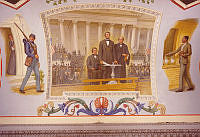The Households of President John Adams (original) (raw)
Rubenstein Center Scholarship
This article is part of the Slavery in the President’s Neighborhood initiative.Explore the Timeline
On April 21, 1789, John Adams took the oath of office to become the first Vice President of the United States. Over the next twelve years, John and Abigail Adams followed the federal government as it was relocated from New York City to Philadelphia, and finally to Washington, D.C. In each city, they formed an official household, hosted family members, welcomed guests, and hired a staff of servants to maintain the home. George Washington and the Virginians that followed Adams in office owned enslaved chefs, lady’s maids, valets, coachmen, or postilions that they brought to the President’s House and forced to labor without pay. Adams did not own enslaved people. Instead, the Adamses hired white and free African-American workers to provide these services. However, that did not mean that they avoided slavery altogether. While the Adamses opposed slavery both morally and politically, they tolerated the practice in their daily lives and they may have hired out enslaved African Americans, paying wages to their owners, to work in the Vice President’s and President’s House.
While John was technically the head of the household, Abigail ably ran the home. John depended on her management and expertise, requiring her presence to set up a new house every time the federal government moved to another city. A few weeks after arriving in New York City to assume his office, John wrote to Abigail urging her quick departure: “I must finally conclude to request of you to come on to New York as soon as possible and bring Charles and Thomas both with you if you can.” If their sons were unable to come immediately, she was to leave them behind and depart right away. He concluded, “I want your Advice about furniture and House.”1
Ten days later, he wrote to let her know that he had secured a house and needed her to decide on furniture.2
When Abigail had not departed a few weeks later, John again asked her to leave immediately: “I must now most Seriously request you to come on to me as soon as conveniently you can. Never did I want your assistance more than at present, as my Physician and my Nurse."3

Richmond Hill, New York, c. 1897. The Residence of Abigail and John Adams.
The Miriam and Ira D. Wallach Division of Art, Prints and Photographs: Picture Collection, The New York Public Library. "Richmond Hill House, Varick Street, Between Charlton And Vandam Streets." New York Public Library Digital Collections. http://digitalcollections.nypl.org/items/510d47e0-d466-a3d9-e040-e00a18064a99
Each time the Adamses relocated, they repeated this process—John usually went first and then wrote letters to Abigail urging her to join him with the utmost haste. As a result, Abigail’s letters are the best source for information about their household and its organization. Unfortunately, their account books do not offer much information about wages paid to employees, so many names and identities seem to be lost to history. Yet, Abigail’s colorful correspondence with her family and friends do reveal interesting details about the individuals that labored in the President’s House during the Adams administration.
In March 1797, President John Adams moved into the large brick house on the corner of Sixth and Market Streets, formerly occupied by the Washingtons and their enslaved and free servants. He wrote back to First Lady Abigail about the dreadful condition of the house and the staff: “This House has been a scene of the most scandalous Drunkenness and Disorder among the servants, that ever I heard of. I would not have one of them for any Consideration."4 Click here to learn more about the enslaved households of President George Washington.

Letter from John Adams to Abigail Adams, 22 March 1797, wherein he writes, “This House has been a scene of the most scandalous Drunkenness and Disorder among the servants, that ever I heard of. I would not have one of them for any Consideration.”
Collection of Massachusetts Historical Society
This scene represented the Adams’s struggles to hire and maintain a sober, industrious staff throughout their time in public service. The prevalence of affordable and always-available alcohol caused Abigail constant trouble. Shortly after moving to Philadelphia in 1790, Abigail confessed to her sister that she had hired and fired seven cooks in eighteen months and believed that there was “not a virtuous woman amongst them all; the most of them drunkards.” Her most recent hire was also a failure: “I recruited with a new one last monday, who brought written recommendations with her, and who to all appearence is very capable of her buisness, but on thursday got so drunk that she was carried to Bed, and so indecent, that footman Coachman & all were driven out of the House, concequently she has turnd herself out of doors.”5
Abigail finally came to the conclusion that she would only hire American-born servants and enslaved African Americans were the most reliable of that group: “the chief of the Servants here who are good for any thing are Negroes who are slaves, the white ones are all Foreigners & chiefly vagabonds.”6 In her experience, immigrants that came to American cities were easily swayed by alcohol and other temptations. Instead, servants born in the U.S. were less likely to be corrupted by the charms and sins of the city.
While Abigail generally lamented the never-ending personnel changes in her house, she eventually found a few reliable individuals to employ in the President’s House. First and foremost, the Adamses depended on their steward, John Briesler (or Brisler). Briesler first joined the Adams family in February 1784 when he accompanied Abigail on her journey to join John in London. He managed their home in England and continued in their employment during Adams’ presidency.7 After Briesler married, his wife Esther served as Abigail’s lady's maid and assisted with other household tasks. After Mrs. Briesler’s health deteriorated, the Briesler family continued to live with the Adamses and Abigail hired additional workers to take care of the housekeeping tasks.8

The President’s House in Philadelphia in the 1790s. Watercolor by William L. Breton
Historical Society of Pennsylvania
The Adamses left many of the management and purchasing decisions to Briesler, including the hiring of male workers for the Philadelphia and Washington, D.C. homes and stables: “the Male Domesticks I leave wholy to Brisler to hire and to dismiss.”9 For this work, Briesler was well compensated; he received 500annually.Whilethatsumpaledincomparisontothepresident’ssalaryof500 annually. While that sum paled in comparison to the president’s salary of 500annually.Whilethatsumpaledincomparisontothepresident’ssalaryof25,000, it was a significant amount for a steward and included lodging and meals for his family.10
While Abigail deferred to Briesler to manage the male servants and stable hands, she carefully selected her lady’s maids. When preparing to leave Quincy, Massachusetts, to set up the President’s House in Philadelphia, Abigail planned to bring at least one female maid, “a respectable one, particularly to attend upon me.” She was probably referring to Betsy Howard, her preferred lady’s maid. Abigail also hoped to find a housekeeper to take “direction of that class of Domesticks who require such attentions, I should be glad to engage such an one.”11
A few months later, Abigail concluded that she would need additional servants and selected two girls, Betsy Marshall and Becky Tirril, to accompany her to Philadelphia.12 When she shared these plans with John, he told her to bring as many female servants as she wanted as long as she joined him quickly—a common refrain.13
The lady’s maids in the home remained relatively consistent for the next four years during John’s presidency. In the fall of 1800, as the government planned to move to Washington, D.C., Abigail oversaw the relocation of their family. In late October, she sent Betsy Marshall and Becky ahead to D.C. to help Briesler set up the new President’s House.14

The White House, 1800. This color illustration depicts what the south view of the White House might have looked like while major construction was just completed. The house itself is intact but the lawn is full of mud and carts.
Tom Freeman for the White House Historical Association.
The lady’s maids likely slept in the bedrooms on the third or fourth floors of the President’s House in Philadelphia, which were reserved for hired or enslaved workers. When President George Washington moved into the house in November 1790, he had designated the third floor as the living space for his private secretaries and their families, and the fourth floor for servants or enslaved individuals. He also ordered additional rooms built between the smokehouse and the cow house for the enslaved men that worked in the stables. Adams likely maintained these arrangements. Once the Adamses moved to Washington, D.C., Betsy Marshall slept in a small chamber off of Abigail’s rooms. John Briesler and Betsy Howard had their own rooms, and the rest of the hired staff slept in the rooms along the Ground Floor Corridor.15 The Ground Floor rooms continued as lodging for domestic staff until the basement was fully renovated by Theodore Roosevelt in 1902.
While Abigail’s female staff remained fairly consistent, the cooks, housekeepers, and male workers proved to be a bigger challenge. A few years into John’s vice presidency, the Adamses fired their coachmen, Robert, for frequently driving the carriage while intoxicated. They hired a replacement, but Abigail did not record his name. A few years later, in April 1800, Abigail reported to her sister that she had a new coachman and she believed he was a “decent civil sober Man” because he was a “Native American.” She likely didn’t mean that he was of a member of a Native American nation, but rather she believed that because he was born in the United States, he was less prone to corruption than European immigrants.16 She may have been referring to “Curry,” whom she asked John Adams to send to Baltimore in November 1800 to pick her up in their chariot.17
A young African-American man named James also lived with the Adamses during their time in public office. In 1790, Abigail contracted fourteen-year-old James to work for her for the next seven years. James spent most of his time tending the horses, helping the coachmen, and running other errands for the household.18 After his term of service, he seems to have continued in the household working as a coachman or postilion for wages until early 1800, perhaps when Curry took over these responsibilities.19
Until the end of the Adamses’s time in Washington, D.C., Abigail struggled to employ a responsible and reliable cook. After churning through seven cooks in their first eighteen months in New York and Philadelphia, Abigail finally settled on a man named Mr. Frank. Frank brought his wife and children to live at the President’s House in Philadelphia, but at some point in early 1800 Abigail tired of having so many people in the home: “I shall not encumber myself with Frank & family, nor shall I have more than three or four Men Servants this Season.”20 She explained that she would much “rather Hire a Single woman to Cook & take charge of the workpeople, than take in any Family I can think of. we are much too near together to have things go on right with a family who have large connections."21

Abigail found a cook to serve for the spring and summer in Philadelphia, but just a few months later was again searching for a new person as her current employee did not want to move to Washington, D.C. Furthermore, Esther Briesler was too ill to work and would remain in Massachusetts, forcing Abigail to find a new housekeeper as well. She wrote to Catherine Nuth Johnson, John Quincy Adams’s mother-in-law, who resided in D.C. and asked for her help: “My Steward requests me to apply to you to find some trusty woman of middle age, for a Housekeeper, who can assist him in the oversight of the House and domesticks. Blacks may be had I presume for the Subordinate Stations, and possibly as Cooks.”22
Surviving records do not reveal who the Adamses hired to supplement the domestic staff they brought to Washington, D.C., but this last letter highlights the Adamses’ complicated relationship with race, slavery, and workers in their homes. At times, Abigail was condescending and racist: “I cannot find a cook in the whole city but what will get drunk, and as to the Negroes—I am most sincerely sick of them.”23 In other moments, she preferred African-American workers, as they would get along better with James or cause less trouble.24 Given that Washington, D.C. had been carved from Maryland and Virginia, two states that permitted slavery, many of the African Americans available for hire would have been enslaved. Abigail was smart and politically savvy; she understood the available labor pool in the South. Whether or not she ended up hiring enslaved workers in D.C., she appeared willing to do so in August 1800.
We have no way of knowing if Abigail hired free or enslaved African Americans for the Vice President’s and President’s House, but the evidence suggests some of both. For example, Abigail wrote that James was bound to her for seven years, but this term of service was likely indentured servitude or an apprenticeship. In February 1797, after James completed his service, Abigail fought with her neighbors in Quincy to enroll him in a local school with other white students—a step she likely would not have taken for an enslaved man.25

Letter from John Adams to Abigail Adams, 2 November 1800, wherein he writes, “May none but honest and wise Men ever rule under this roof.”
Collection of Massachusetts Historical Society
Yet, while the Adamses resided in the President’s House in Philadelphia, it is possible their cook brought with him an enslaved woman or the Adamses hired her out from a local slave owner. No records remain to reveal this woman’s legal status, but Abigail’s language suggests that she was enslaved: “A Negro woman who is wholy with the Cook in the kitchin, and I am happy in not having any occasion for any others for a very sad set of creatures they are.”26 Generally speaking, when referring to free African Americans, Abigail often used the term “blacks.” But she likely used “negroes” or “creatures” to indicate enslaved status. Slavery was reserved for discussions about the institution and its political ramifications. In 1776, when she famously reminded John to “remember the ladies,” she criticized Virginians for their “passion for Liberty,” while “depriv[ing] their fellow Creatures of theirs.”27 Abigail used similar language after moving into the President’s House in Washington, D.C., describing a crew of enslaved laborers toiling on the future White House Grounds: “I have amused myself from day to day in looking at the labour of 12 negroes from my window, who are employd with four small Horse Carts to remove some dirt in front of the house.”28
The Adams’s household staff was likely similar to those of many northern families that resided in cities with large enslaved and free black populations. While they may have morally opposed slavery, they often accepted enslaved labor in their homes as the most convenient or cost-effective option. We hope to uncover additional evidence about the workers in the Adams’s household, especially as the editors of the Adams Papers at the Massachusetts Historical Society complete the volumes on the Adams presidency. If you have any additional information about any of the individuals that may have worked in the Adams’s households, please reach out to the White House Historical Association’s Slavery in the President’s Neighborhood initiative at SPN@whha.org.
Thank you to Dr. Neal Millikan, Series Editor, Digital Edition at the Massachusetts Historical Society for her assistance and expertise.
You Might Also Like

Collection
The Decatur House Slave Quarters
In 1821-1822, Susan Decatur requested the construction of a service wing. The first floor featured a large kitchen, dining room, and laundry; while the second floor contained four rooms designated as living quarters. By 1827, the service wing was being used as an urban slave quarters. Henry Clay brought enslaved individuals to Decatur House, starting a trend that was solidified by- Scholarship
African Americans Enter Abraham Lincoln's White House, 1863-1865
The New Years’ Day reception became a White House tradition with President John Adams in 1801 and ended with President Herbert Hoover in 1932. A gala social occasion that attracted the interest of dignitaries, journalists and the general public, it eventually generated crowds of several thousand people who crashed the White House gates for a glimpse of the president or, best of al - Scholarship
Paul Jennings
Paul Jennings was born in 1799 at Montpelier, the Virginia estate of James and Dolley Madison. His mother, an enslaved woman of African and Native American descent, told him that his father was the local English trader Benjamin Jennings. While Paul had no documented relationship with Benjamin and probably never met him, he did adopt the ‘Jennings’ surname as his own. As a - Scholarship
Enslaved and Entrenched
Elias Polk was born into slavery in 1806 on a farm owned by Samuel Polk, father of the future president of the United States, in Mecklenburg County, North Carolina. Later that year, Elias moved with the Polk family west to Tennessee, where they settled on land near Spring Hill (about 40 miles south of Nashville).1 In 1824, newlyweds James and Sarah Polk were - Scholarship
“The Back Building”
Built in 1818-1819, Decatur House was designed by the English architect Benjamin Henry Latrobe for Commodore Stephen Decatur and Susan Decatur. Latrobe had previously sent proposals and estimates to Decatur in June 1817, along with this advice: “If the house should be occupied by a foreign Minister, I would also recommend the addition of a slight one story-room, for a servant’s ha - Scholarship
Eliza McCardle Johnson: Conflicting Memories and Vanishing Evidence of the Enslaved Past
In 1980, Margaret Johnson Patterson Bartlett, great-granddaughter of First Lady Eliza McCardle Johnson and President Andrew Johnson, gave an oral interview at Harpers Ferry about the history of her family. Alluding that her ancestors wanted to keep certain family secrets hidden from the public, Mrs. Bartlett recalled when her father sold documents to the Library of Congress in 1904: “My daddy [Andrew Jo - Scholarship
Emancipation Day in Washington, D.C.
Congress passed the Compensated Emancipation Act to end slavery in the District of Columbia and President Abraham Lincoln signed the bill into law on April 16, 1862. Three years later, after the Civil War ended and after the 1865 ratification of the Thirteenth Amendment to the Constitution officially abolishing slavery nationwide, African Americans in the District began to celebrate April 16 as a holiday. - Scholarship
Slavery and French Cuisine in Jefferson's Working White House
President Thomas Jefferson was widely recognized as a Francophile, embracing all things French including art, culture, and custom. While serving as Minister to France from 1784 to 1789, Jefferson developed a particular taste for French cuisine. However, French chefs were very expensive to employ, and Jefferson’s costs regularly outpaced his income. While Jefferson may have been short on cash, he did ha - Scholarship
From the White House to Freedom on the Underground Railroad
First published in 1872, William Still’s The Underground Rail Road drew on the author’s personal experience working with the Pennsylvania Anti-Slavery Society in order to present an engaging, authentic account of the journey from slavery to freedom. Using interviews and personal recollections, Still profiled hundreds of escaped slaves and the abolitionists who helped them along the way. The son of e - Scholarship
Gracy Bradley's White House
On November 24, 1831, Andrew Jackson, Jr. married Sarah Yorke. President Andrew Jackson, a devoted father, wanted to give his son’s new bride a wedding present. In March of 1832, he purchased what he thought would be most helpful for a young woman setting up her own domestic household for the first time – an enslaved woman named Gracy Bradley.1 - Scholarship
The Enslaved Household of President Andrew Jackson
In January 1829, less than two months before he became president, Andrew Jackson ordered an inventory of his slaves. The inventory recorded the names, ages, and familial relationships of ninety-five enslaved individuals who lived and worked at The Hermitage, his Tennessee plantation.1 When President-elect Jackson left for the White House, he brought some of these enslaved people with him. The 1830 census - Scholarship
The Complexities of Slavery in the Nation's Capital
For the first seventy-two years of its existence, the nation’s capital, Washington, D.C., harbored one of America’s most difficult historical truths and greatest contradictions: slavery. The city’s placement along the Potomac River, in between the slave states of Maryland and Virginia, ensured that slavery was ingrained into every aspect of life, including the buildings, institutions, and social -

-
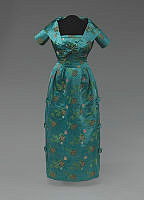
-
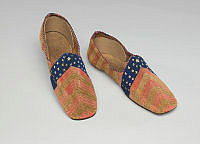
-
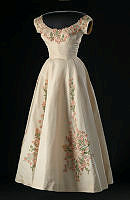
-

-

-
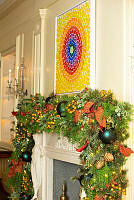
-
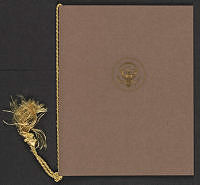
-
